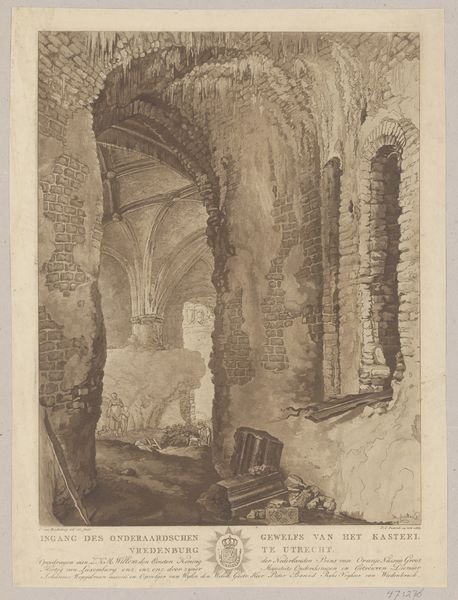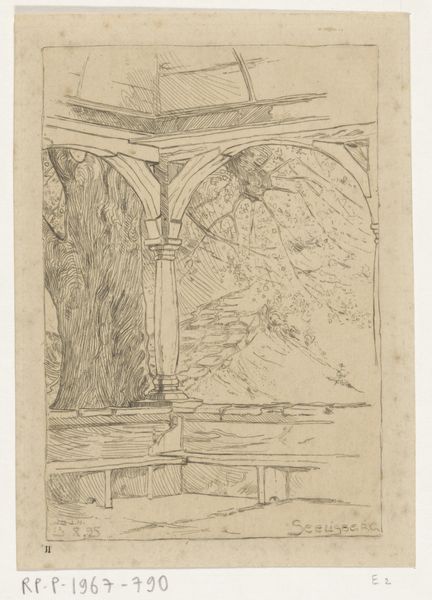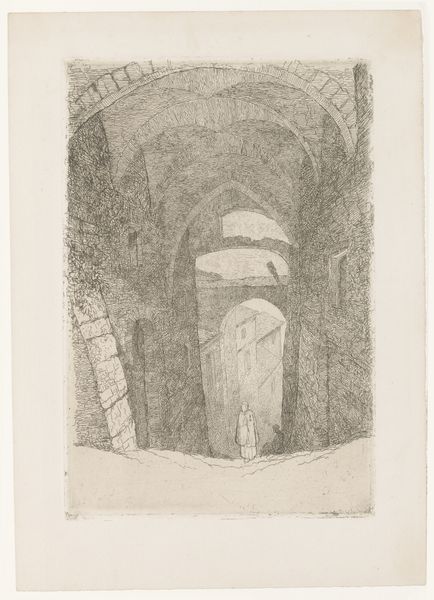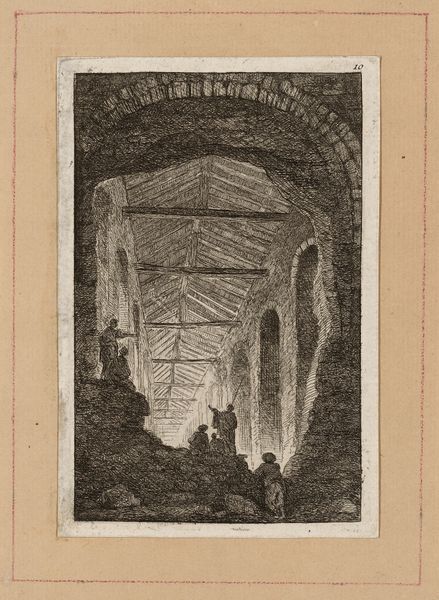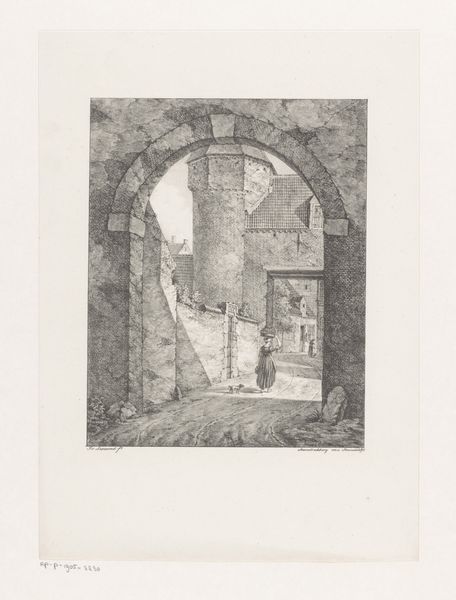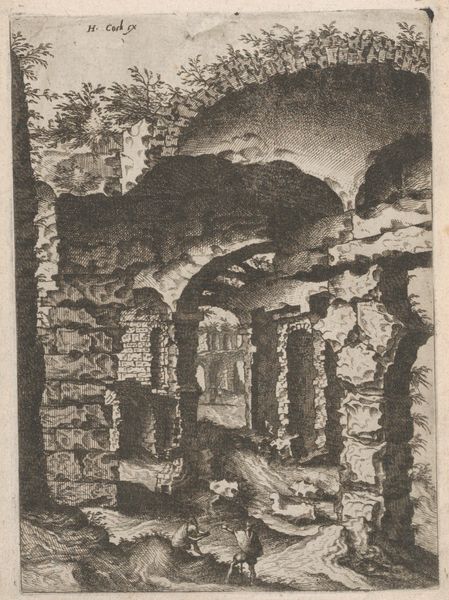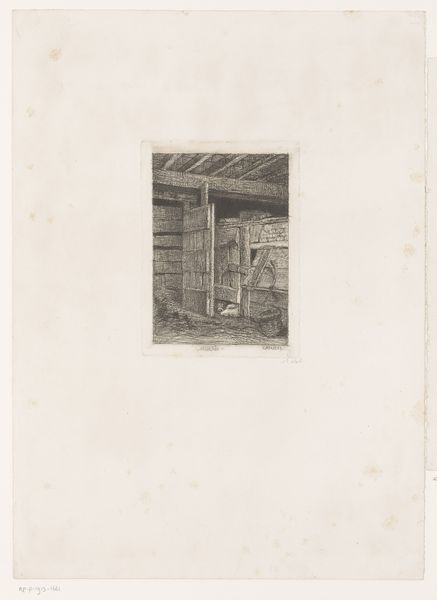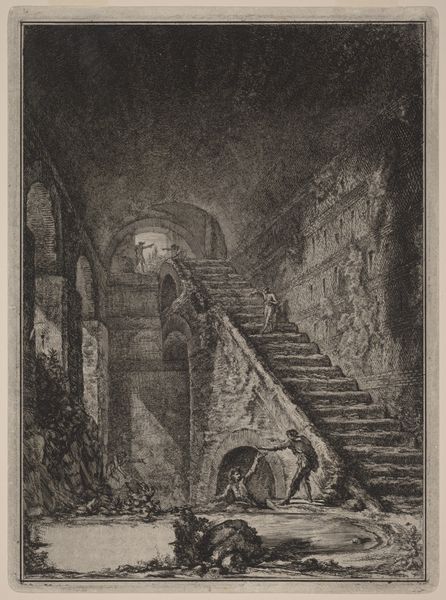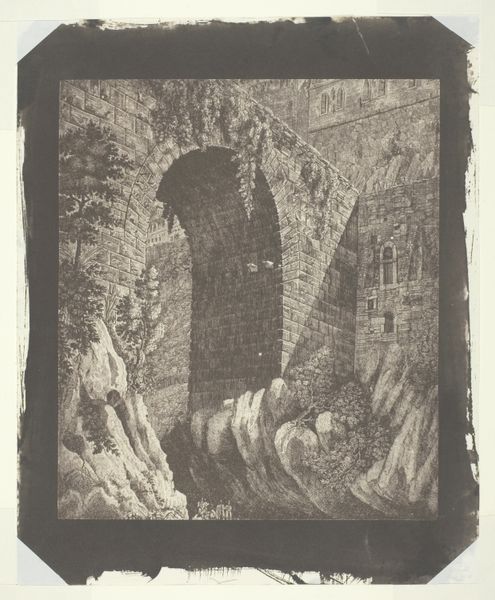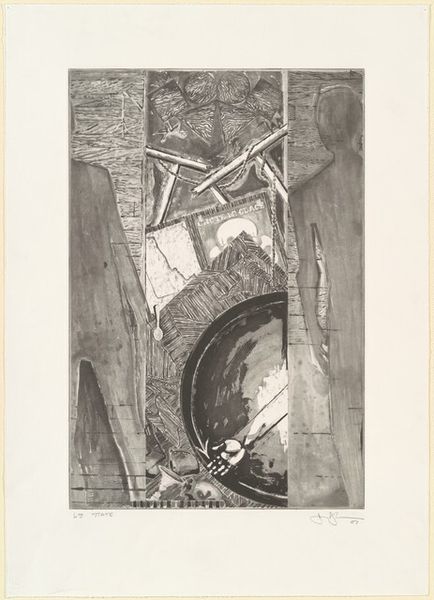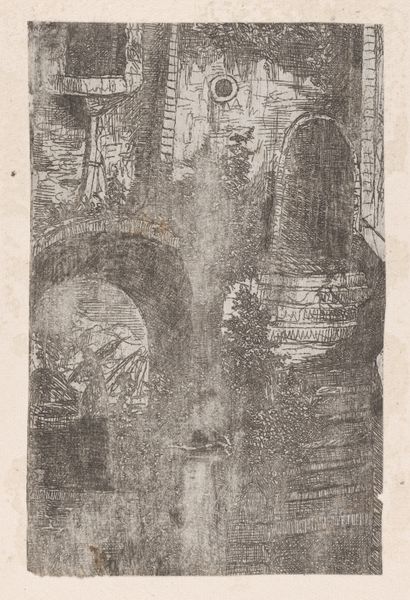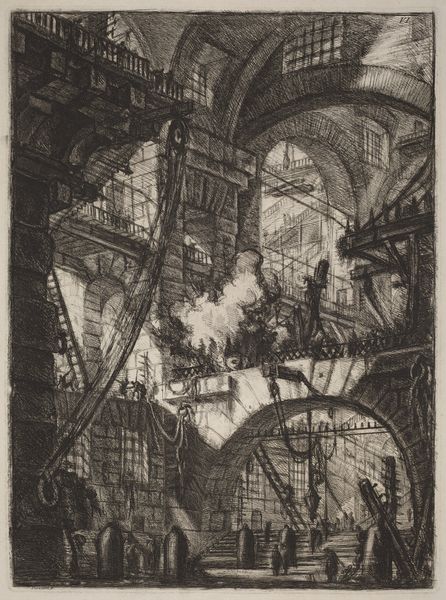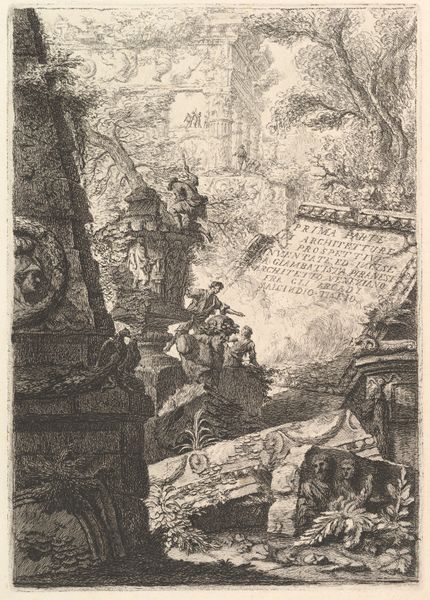
print, etching, engraving
# print
#
etching
#
old engraving style
#
landscape
#
genre-painting
#
engraving
#
realism
#
monochrome
Dimensions: height 350 mm, width 248 mm
Copyright: Rijks Museum: Open Domain
Curator: This somber print, entitled "Miners at a Mineshaft," was created by Karl Meunier sometime between 1874 and 1894. He employed an etching and engraving technique, resulting in this striking monochrome image. Editor: The starkness hits me first—the somber monochrome palette creates an incredibly oppressive mood. There's an overwhelming sense of weight. It feels like entering a different world. Curator: Indeed. The monochromatic effect is key to conveying the bleakness inherent in this type of labor. Consider also the monumental scale of the mineshaft depicted. This was likely a deliberate choice on the part of the artist. Editor: It seems symbolic. I'm struck by how the rigid structure of the mineshaft—these angular, almost brutalist forms—tower over the miners, dehumanizing them, as if cogs in a machine. It’s the embodiment of industrialized labor's psychological weight. Curator: Meunier was deeply engaged with the social and political conditions of his time. He had a profound interest in the lives of the working class. Prints like this served a purpose: they made the harsh realities visible to a wider audience and advocated for change. Editor: So, in a sense, it becomes a potent political symbol—not just about work but also the socio-economic disparity. The symbolic use of shadow enhances the effect, shrouding faces, erasing individuality in service of industry. I can imagine the continuity of this visual, finding resonance even today in how we view labor conditions. Curator: Precisely. Images such as this influenced subsequent generations of artists and contributed to broader public discourse about worker's rights and the ethical implications of industrialization. These prints acted as potent documents for those excluded from conventional political participation. Editor: Looking closely now, the print seems to contain some religious imagery: The mine structure almost resembles a cathedral looming behind them, maybe ascribing a sacred dimension to their suffering and endurance. Curator: That’s a compelling interpretation! The artist may indeed have intended that visual connection, suggesting that their toil, much like religious devotion, holds some higher meaning. Editor: Exploring this work today brings the cultural weight of progress into sharper focus. The miners are transformed not merely into workers, but almost mythical figures within a landscape marked by profound psychological impact. Curator: Thank you for your poignant insights. I think your perspective illuminates the continued relevance of Meunier's work as both art and historical artifact.
Comments
No comments
Be the first to comment and join the conversation on the ultimate creative platform.
